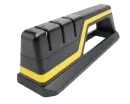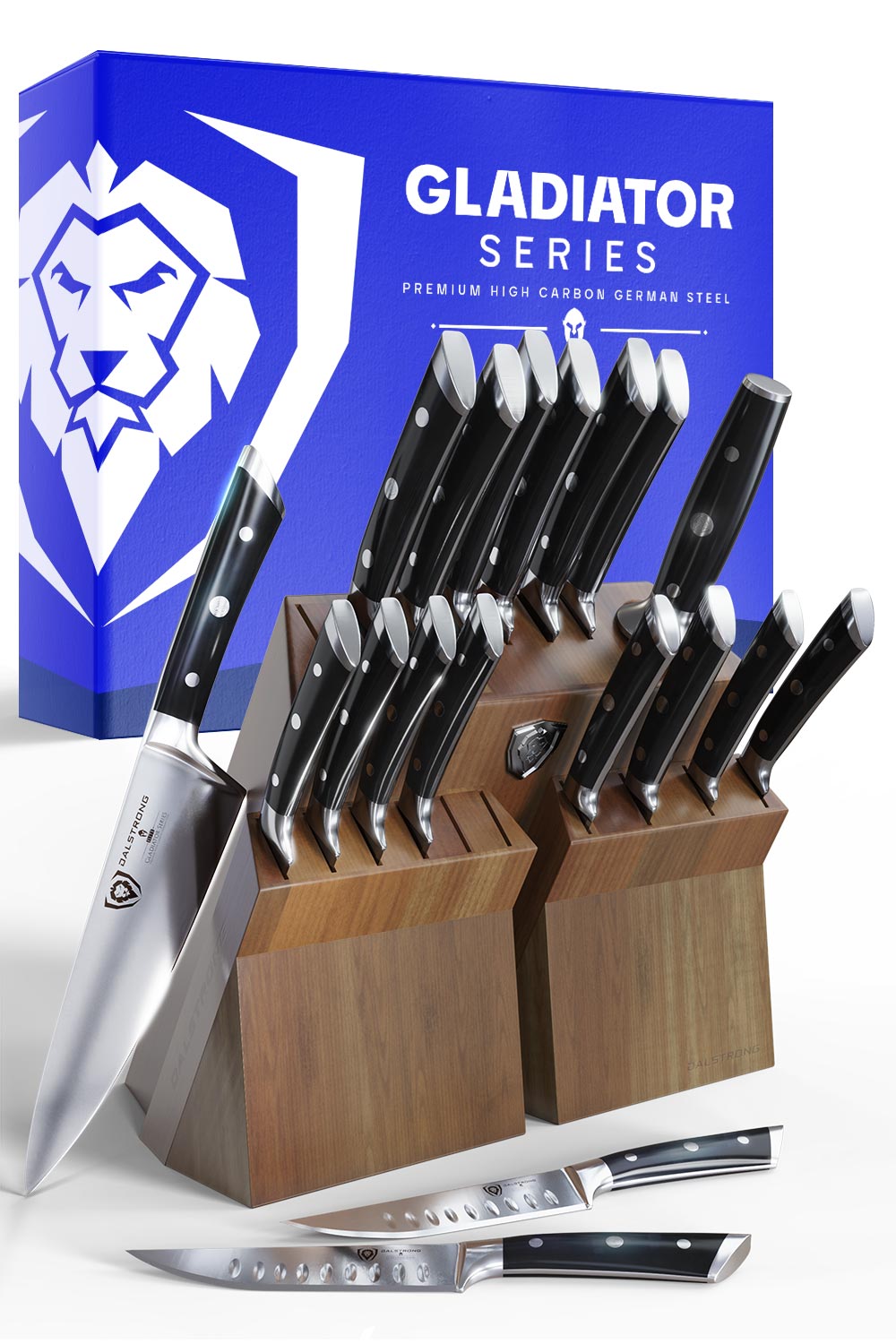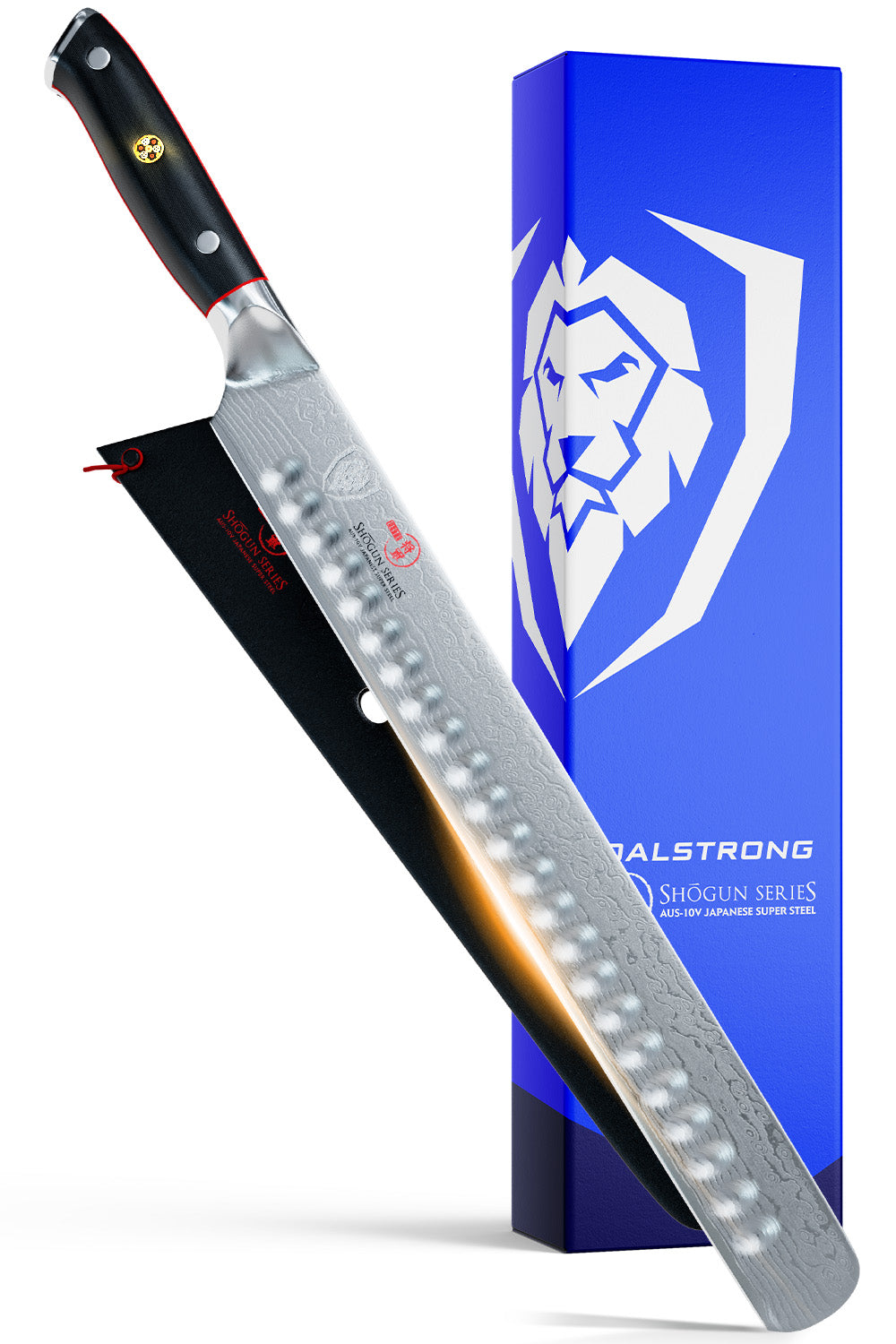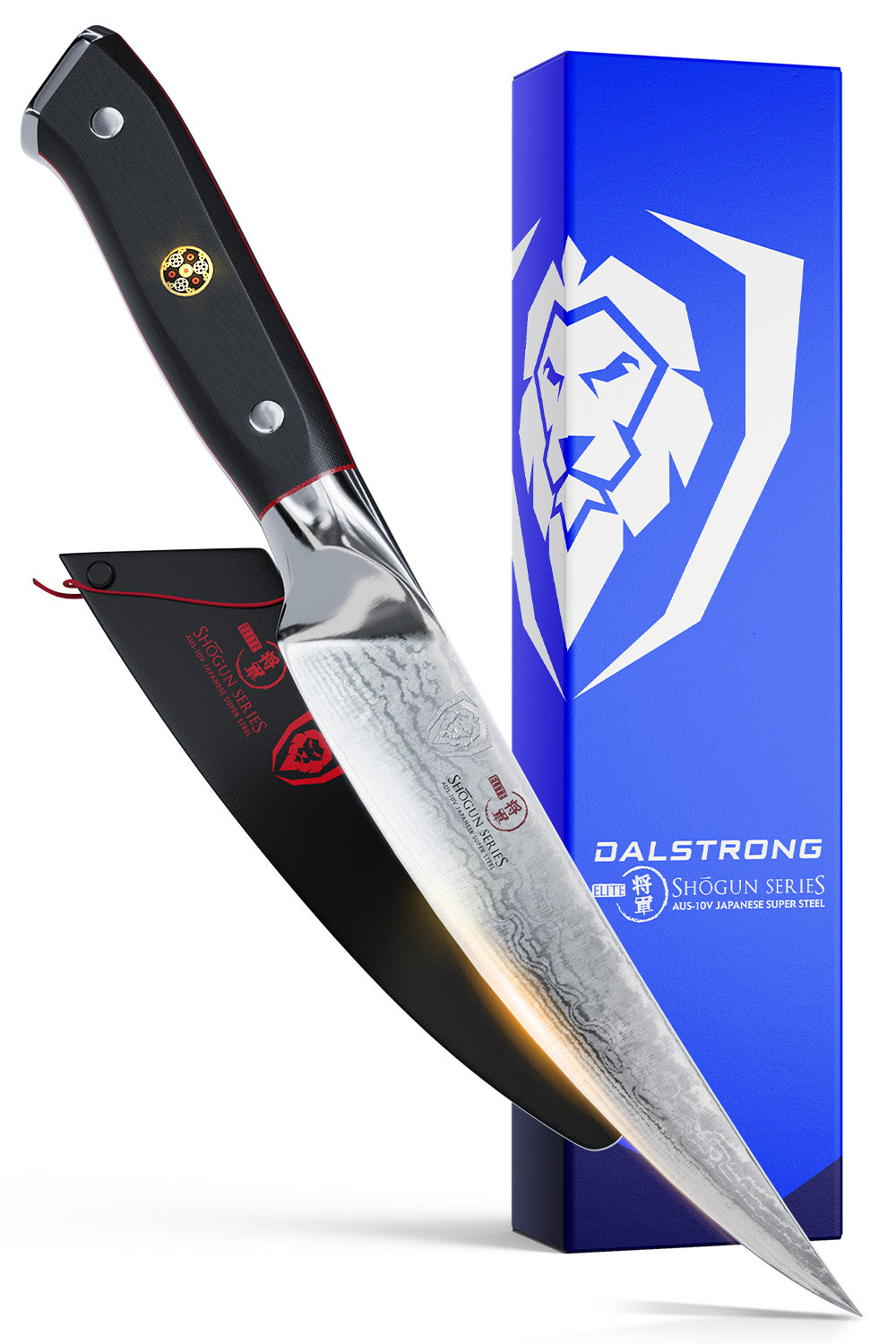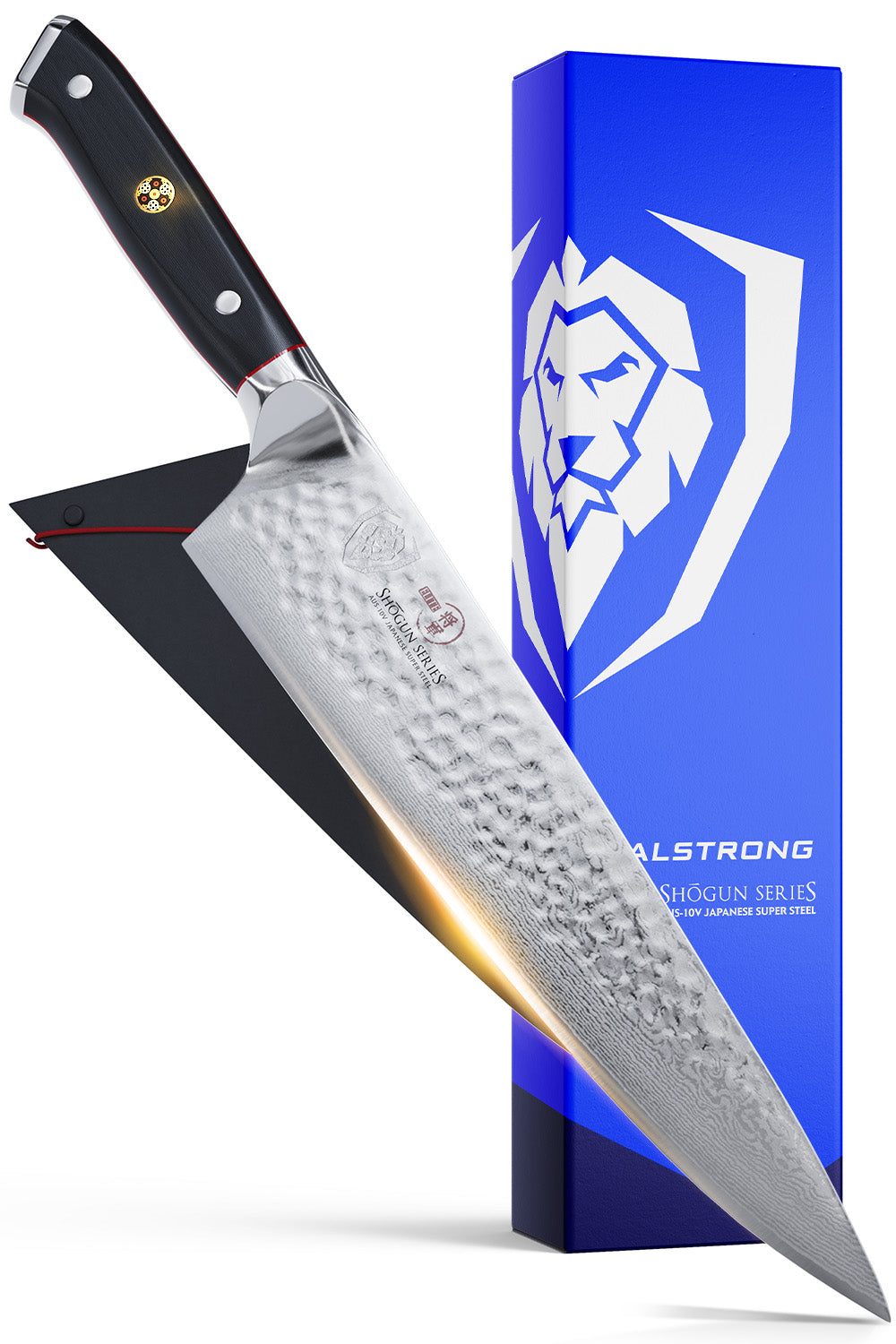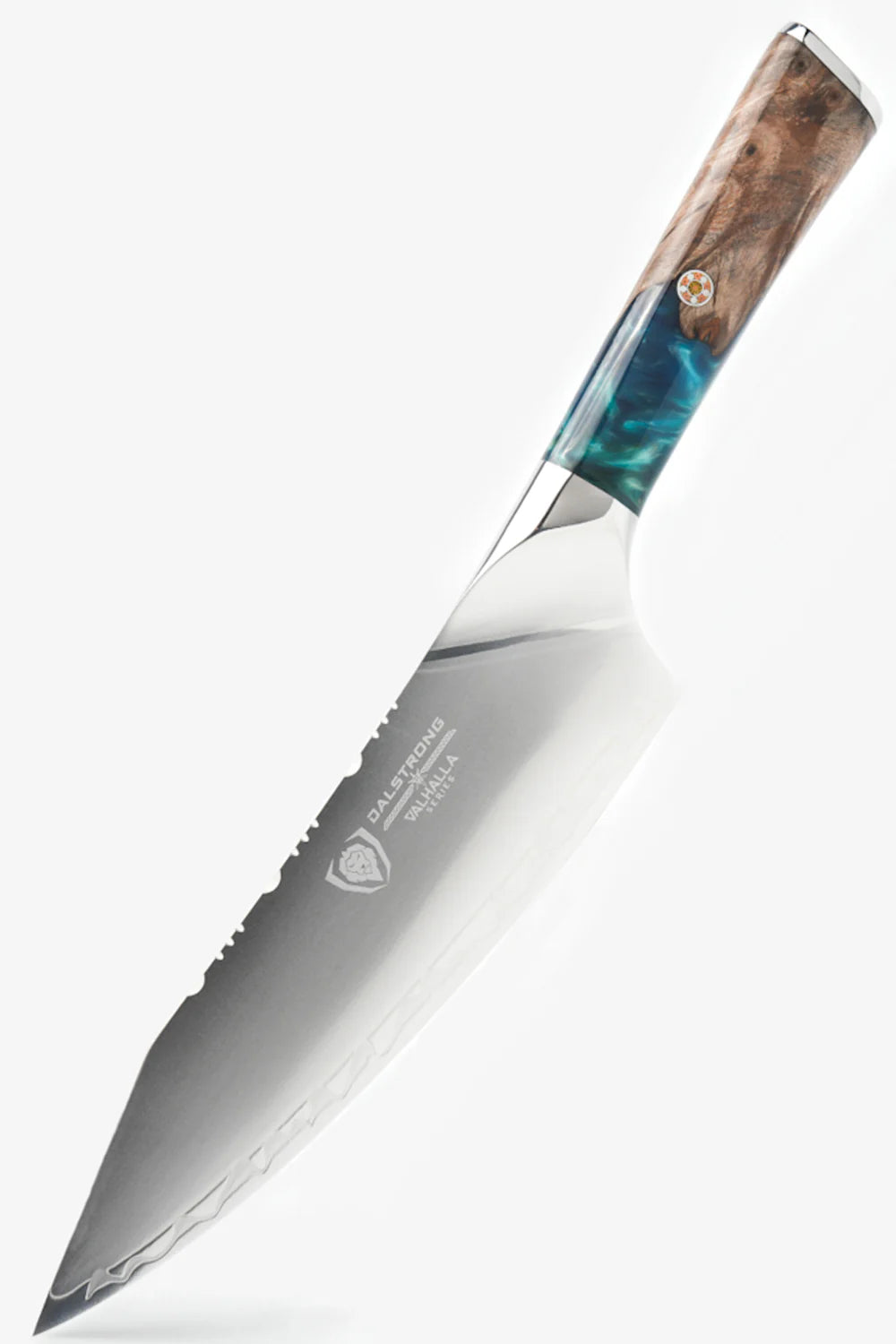 Professional Shellfish & Oyster Shucking Knife 3" | Gladiator Series
Professional Shellfish & Oyster Shucking Knife 3" | Gladiator Series
An oyster shucker is a must-have kitchen knife for any seafood enthusiast. With its special design, home cooks can pry shells open and make quick work of the connective muscle that keeps the oyster flesh connected to its shell.
 Professional Shellfish & Oyster Shucking Knife 3" | Gladiator Series
Professional Shellfish & Oyster Shucking Knife 3" | Gladiator Series
1. What Is an Oyster Shucker?
Who doesn’t love oysters? Known as “the food of love,” this miraculous seafood may feel like a lot of grunt work for not a whole lot of meat, but its meat is so delicious and so rich in nutrients that putting in the work is worth it. Check out this article on the Top 10 Health Benefits of Oysters.
Oysters are rich in vitamin D, copper, zinc, and manganese. Not only that, but their tender flesh can be served raw (with a little lemon juice and cocktail sauce – yum!), or fried, baked, steamed, or stewed. It’s surprisingly versatile, and absolutely delicious in any of its presentations.
But as we all know, between us and the delectable oyster flesh is the hard shell. This shell is an obstacle in the way of any home cook who wants to try his hand at preparing oysters. However, thanks to oyster shuckers – special opener tools that are designed to quickly and easily pry open the shell – it’s not an impossible task.
With just a bit of patience and the right oyster shucking knife, anyone can learn how to quickly shuck oysters. Oyster shuckers aren’t exactly included in a lot of knife sets; they are specialty tools with a very specific purpose. So let’s talk about how they work, and which ones you should be looking to buy.
2. Brief History of Oyster Shuckers
People have been opening oysters for a long time. Long before we had stainless steel oyster shuckers, we’d been employing different tools to get them open. Early on in our relationship with this delicacy, humans would use improvised oyster openers (which is to say, we used to bash them open with rocks).
That sounds like a lot of strenuous work, so we eventually came up with better ways to pry them open. That’s, essentially, what the modern oyster shucker is.
It is believed that the first oyster knives were produced in Crisfield, Maryland, dating back to the early 1900s. Originally, they were made of iron rods with a blunt side and a tapered side. Not really a knife, per se, more of a slightly more sophisticated oyster shucking stick.
Oystermen would use the blunt end to crack apart groups of shells, and then the tapered end was used to open individual shells. They would work in teams to open all the oysters and then dump the meats into metal buckets for sale to the public.
With the advent of technology, oyster shucking has remained a surprisingly consistent practice. Yes, there are factory lines for oyster shucking, but these are manned by people who still open the shells by hand. The oyster shucking tools we use nowadays are a lot more sophisticated than the oyster shuckers of old, with a smarter design that’s built for efficiency and comfort.
3. How to Shuck an Oyster Like a Pro
Shucking an oyster is a little daunting if you’ve never done it before. Maybe you’re nervous about damaging the oyster somehow. Maybe you’re worried about making a mess. Or maybe you’ve seen those viral videos of raw-bar shuckers going at insane speeds and you’ve thought to yourself “I could never do that.”
Truth be told, you probably won’t get to the point where you’ll match those professional clam shuckers in terms of speed, but shucking isn’t as hard as it looks. It takes practice, like most anything. Give it a shot and stick to it and you’ll find yourself opening dozens of oysters with ease.
To help you get started, here are some tips to shuck oysters like a pro.
- Get the right tools for the job.
- This is a big one. Oyster shucking shouldn’t be done with just any old kitchen knife, as you’ll likely end up damaging your oyster (or, worse, hurting yourself in some way). Look for a knife specifically designed for oyster shucking – we’ve laid out a couple of great options for you below.
- Set up your workspace.
- A good idea is to fill a large bowl with ice water to submerge your oysters as you work, ensuring that they stay chilled no matter how long it takes you to shuck them.
- Fold a clean kitchen towel into thirds. This will come in handy as you’re bracing the oyster during shucking, and it will also keep your hand protected from a nasty slip of the knife.
- Finally, make sure you have a garbage can or a large bowl next to you. You want somewhere to collect the spent shells after you’ve shucked them. And it’s extremely satisfying to see a bowl full of spent oyster shells after you’ve finished your shucking.
- Set the oyster belly side down on the towel.
- Position it so that the point where the shells are hinged together is pointing to the right. Then fold the towel over the oyster so that only the hinge is exposed, using your left hand (or your right hand if you’re a lefty) to hold it steady.
- Place the tip of the oyster shucker in the hinge.
- Now we get to the nitty gritty. Your oyster shucker will have a pointed tip which you can apply to the hinge of the oyster, feeling around for the spot where it can find some leverage. Keep in mind, this isn’t about brute force; you’re not trying to push your knife between the shells. You’re trying to wiggle the knife around until you feel that you can finesse it with some pressure.
- Twist and pry.
- Sounds like a dance move. But it isn’t. The “twist-and-pry” is when you work the oyster knife up and down while also twisting and rotating it. It’s a way to find the right movement and angle of pressure that will pop the shell open from the bottom. This might take a few tries. Don’t be afraid to reposition the tip if it’s not working.
- At some point you’ll hit the right position and you’ll feel the oyster yield. Finding that right spot will take some practice, but you’ll develop an instinct for it.
- Separate the top shell from the bottom shell.
- Once you’ve felt that pop and successfully pried the shell partially open, you can twist your knife so that its broad flat side can pull apart the shells even more.
- Cut the muscle.
- At this point, all that’s left is to cut the muscle that connects the top and bottom shells. All you need to do is start from the hinge end, sliding the blade across, keeping it as flat as you can against the top shell. You’ll feel the muscle approximately two thirds of the way through. This will allow you to cleanly pull the top shell off.
- Pull the top shell off and sever the muscle from the bottom shell.
- This will allow you to fully free the oyster from the shell, and you can easily discard the shell. Success!
4. The Very Best Oyster Shucking Knives
One of the most important aspects to mastering the art of oyster shucking is having the right opener tools. Below are two top-of-the-line knives that will aid any seafood enthusiast in their knife oyster shucking journey.
Professional Shellfish & Oyster Shucking Knife 3" | Gladiator Series | NSF Certified | Dalstrong ©
This powerful little oyster shucker has everything you need to pry open oysters and easily prepare shellfish. It’s strong, it’s durable, it looks unbelievable, and it’s guaranteed to last you a lifetime. Combining looks and rock-solid performance, this 3” oyster shucker from the Gladiator series makes a great gift to the seafood lover in your family.
PROS:
- Its blade is made of high-carbon ThyssenKrupp German X50CrMoV15 steel.
- Features a pointed tip, perfect for sliding in between tight shells, as well as a long handle which will give you all the leverage you need to pop the shellfish open.
- Gorgeous black G10 handle; non-slip and easy to grip.
- The handle also features a hand guard, ensuring your fingers are safe from harm.
CONS:
- At 3”, this oyster shucker is large enough to take on any challenge. But if you’re looking for something a little bigger, check out the clam shucking knife below.
- This blade might be a little heavier than some are expecting, especially if they’re used to lower-quality oyster shuckers.
Professional Oyster & Clam Shucking Knife 3.5" | Shogun Series ELITE | Dalstrong ©
Let’s bump it up a notch with this 3.5” oyster and clam shucking knife from Dalstrong’s acclaimed Shogun series, a stainless steel blade that would be right at home at a professional seafood kitchen or in the hands of a home cook. Easily the best, most powerful, and most stylish oyster shucker you’ll find in the market.
PROS:
- Has an AUS-10V Japanese super steel core with 67 layer Damascus cladding, sharpened under the 3-step Honbazuke method.
- The blade is constructed to optimize its durability and sturdiness.
- Pointed tip and especially designed handle made shucking oysters easy and simple; the perfect tool for both beginners and experts.
- An incredible value for the price.
CONS:
- If you prefer a smaller oyster shucker, check out the first option in this list.
- Some might prefer the overall look of the Gladiator series clam shucker.
5. Frequently Asked Questions
What is an oyster shucker?
An oyster shucker is a type of knife used to separate the shells of an oyster. It’s designed in such a way as to crack into the shell with the pointed end and easily cut the muscle.
Is it hard to shuck oysters?
Shucking oysters definitely takes some practice. It’s not something that most people are good at on their first go. But with some perseverance and the right tools, it can be an easy and enjoyable activity.
Can you shuck an oyster with a butter knife?
Trying to shuck an oyster with a butter knife will not give you the best results. Not only will it be a lot harder to do than if you used a specialized oyster shucker, you might damage the tender oyster flesh.
What is it called to open oysters?
Opening an oyster is also known as shucking.
Should an oyster knife be sharp?
Oyster knives differ from kitchen knives in that they’re usually not sharp, at least not on the rounded point, which is designed to pry open the shell.
Written by Jorge Farah
Born on the coast of Colombia and based in Buenos Aires, Jorge is a cooking enthusiast and kitchenware obsessive with a tremendous amount of opinions.
































